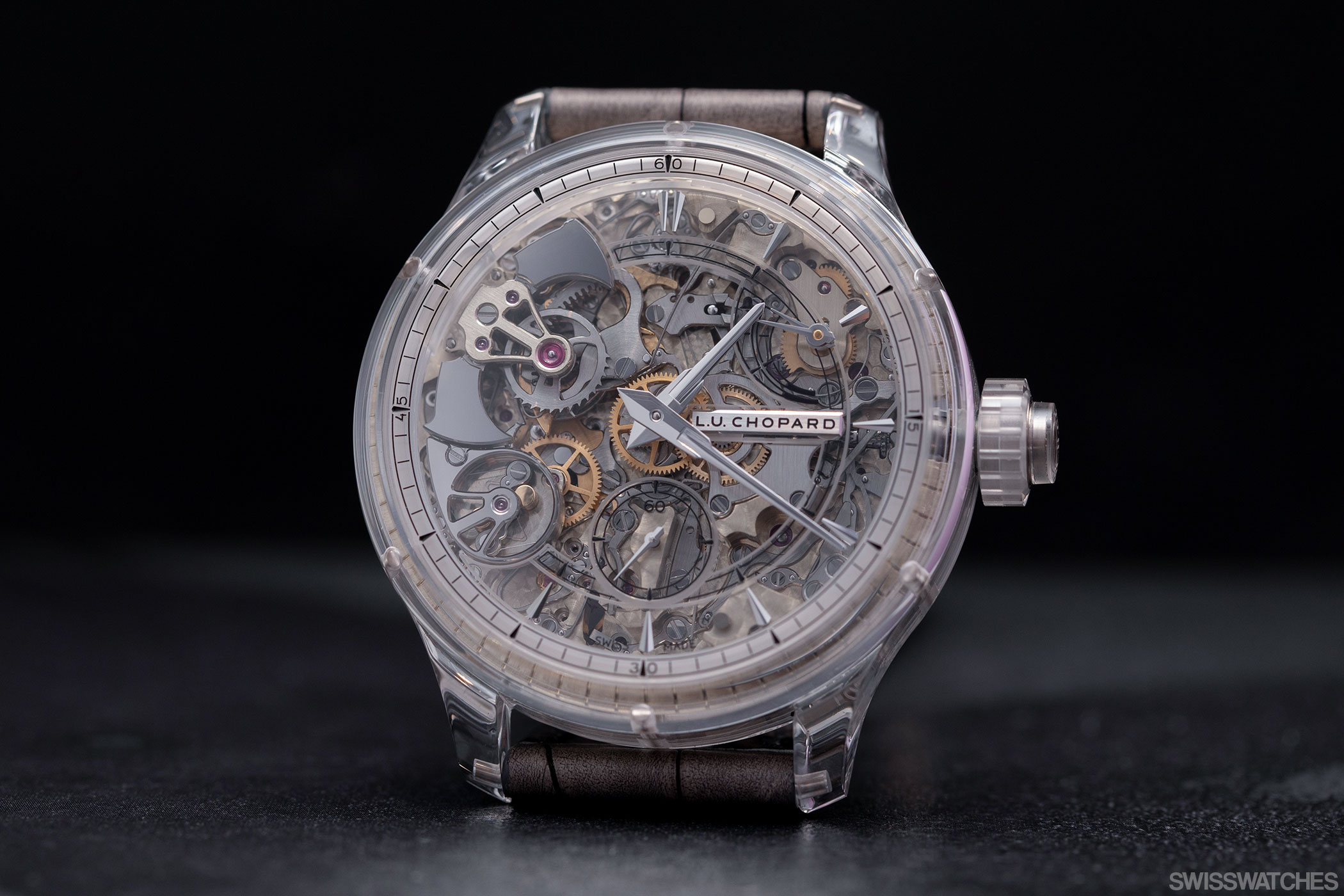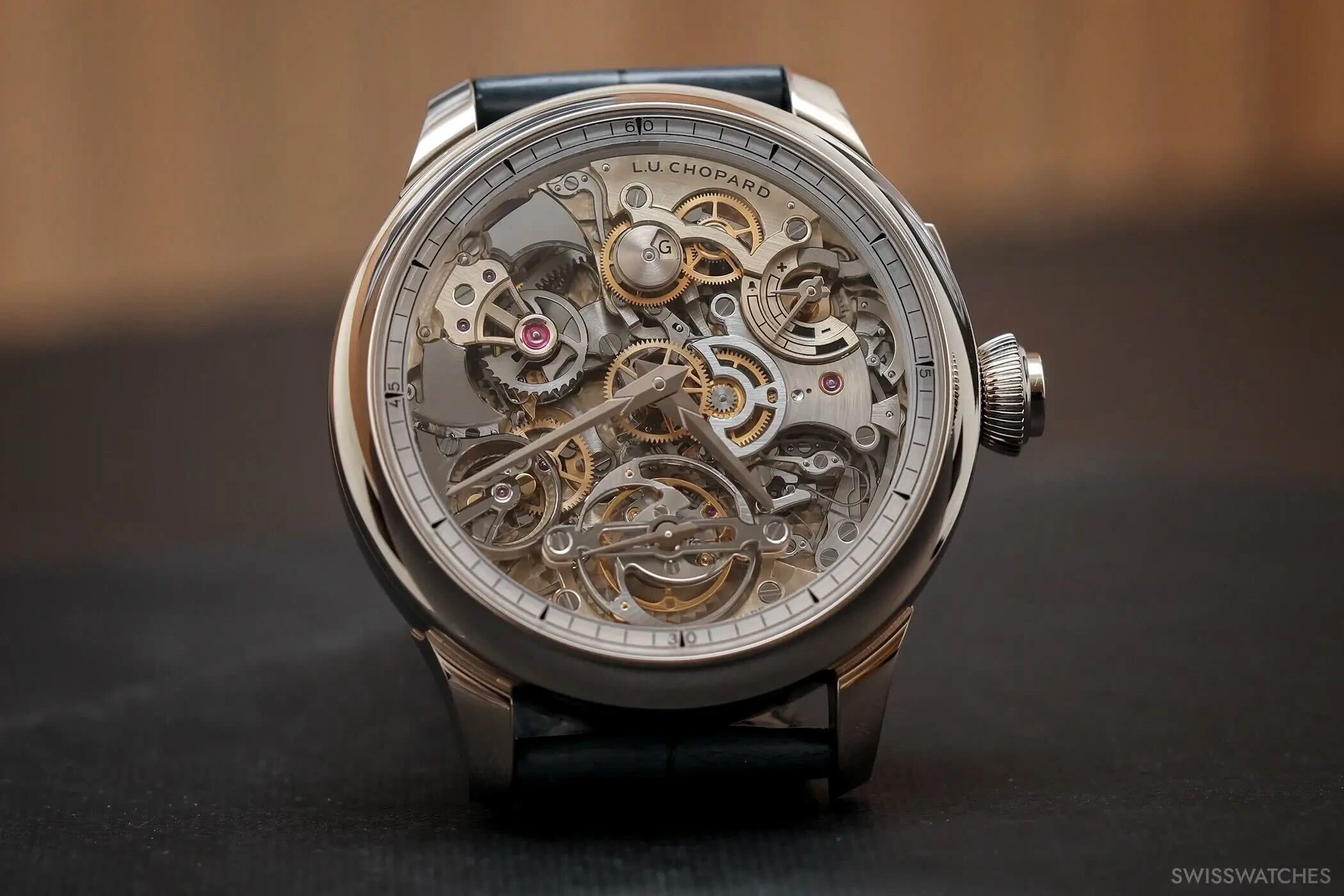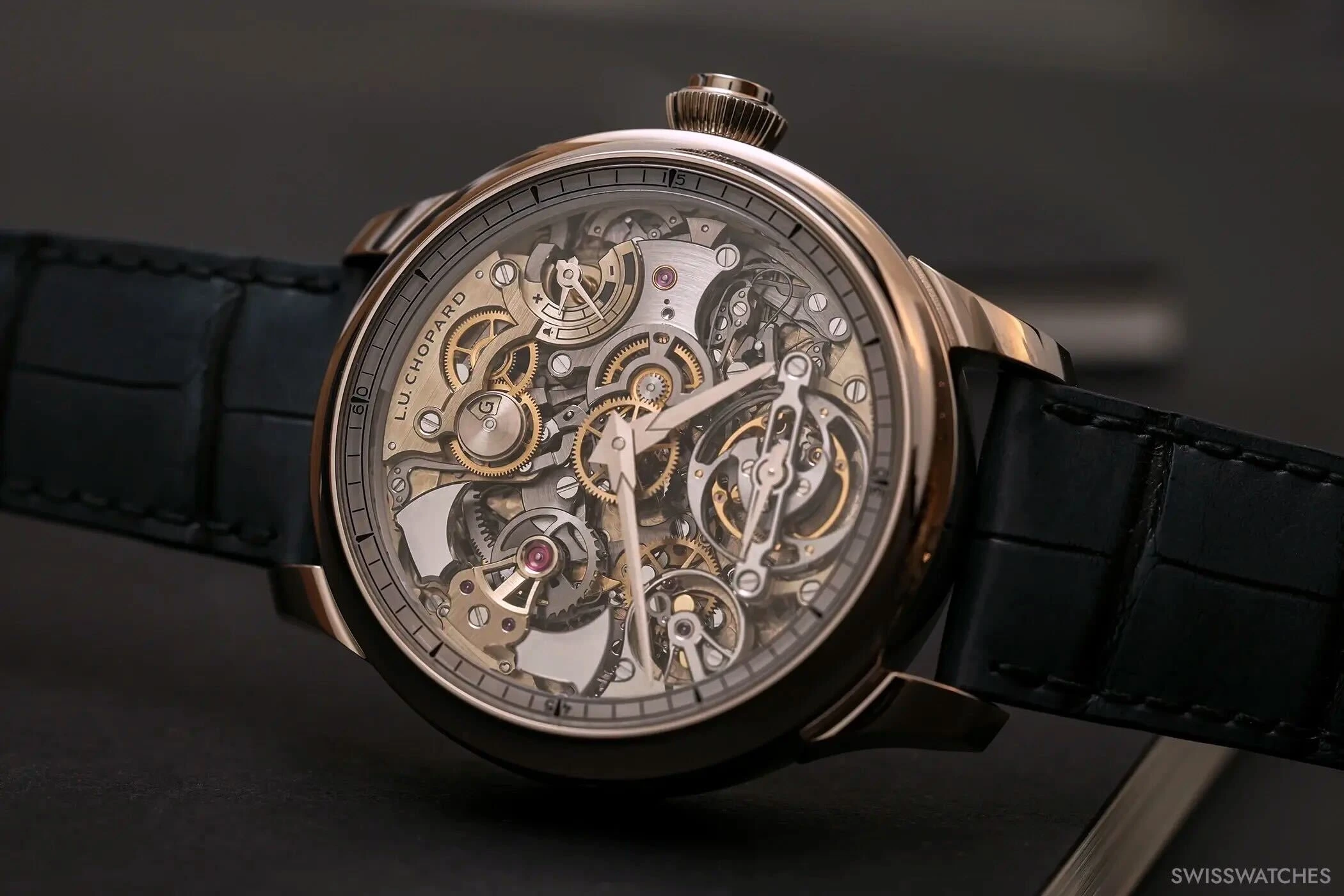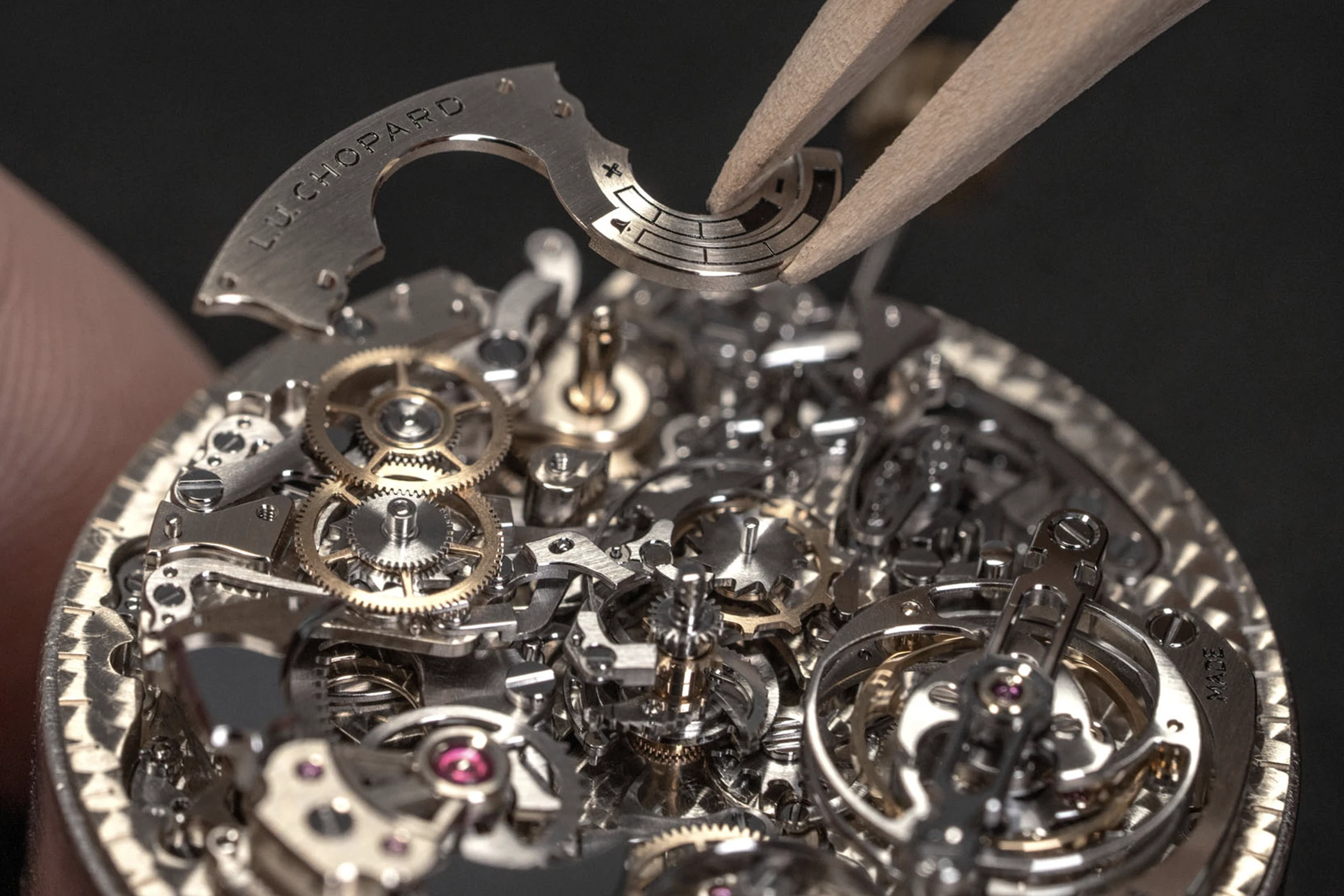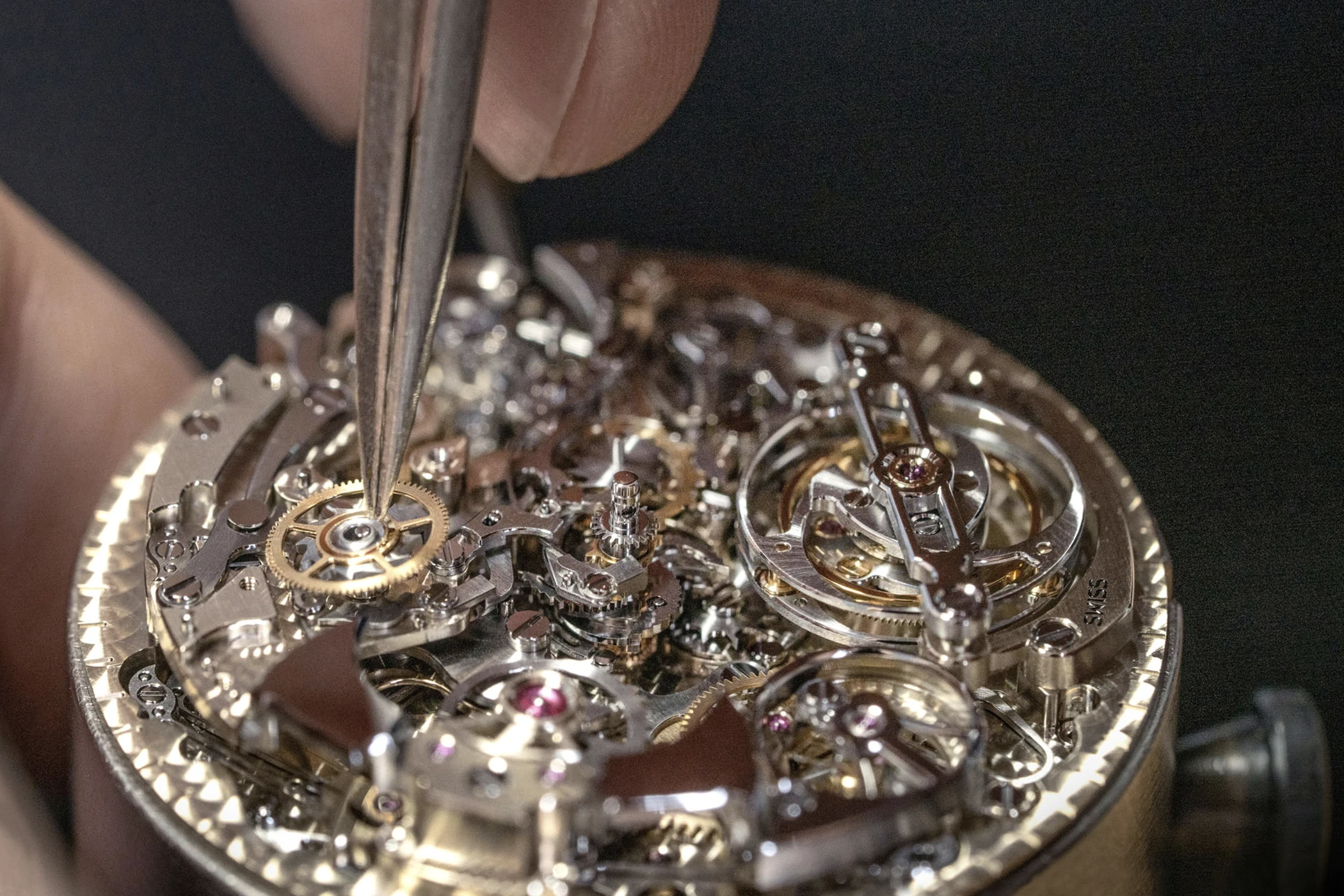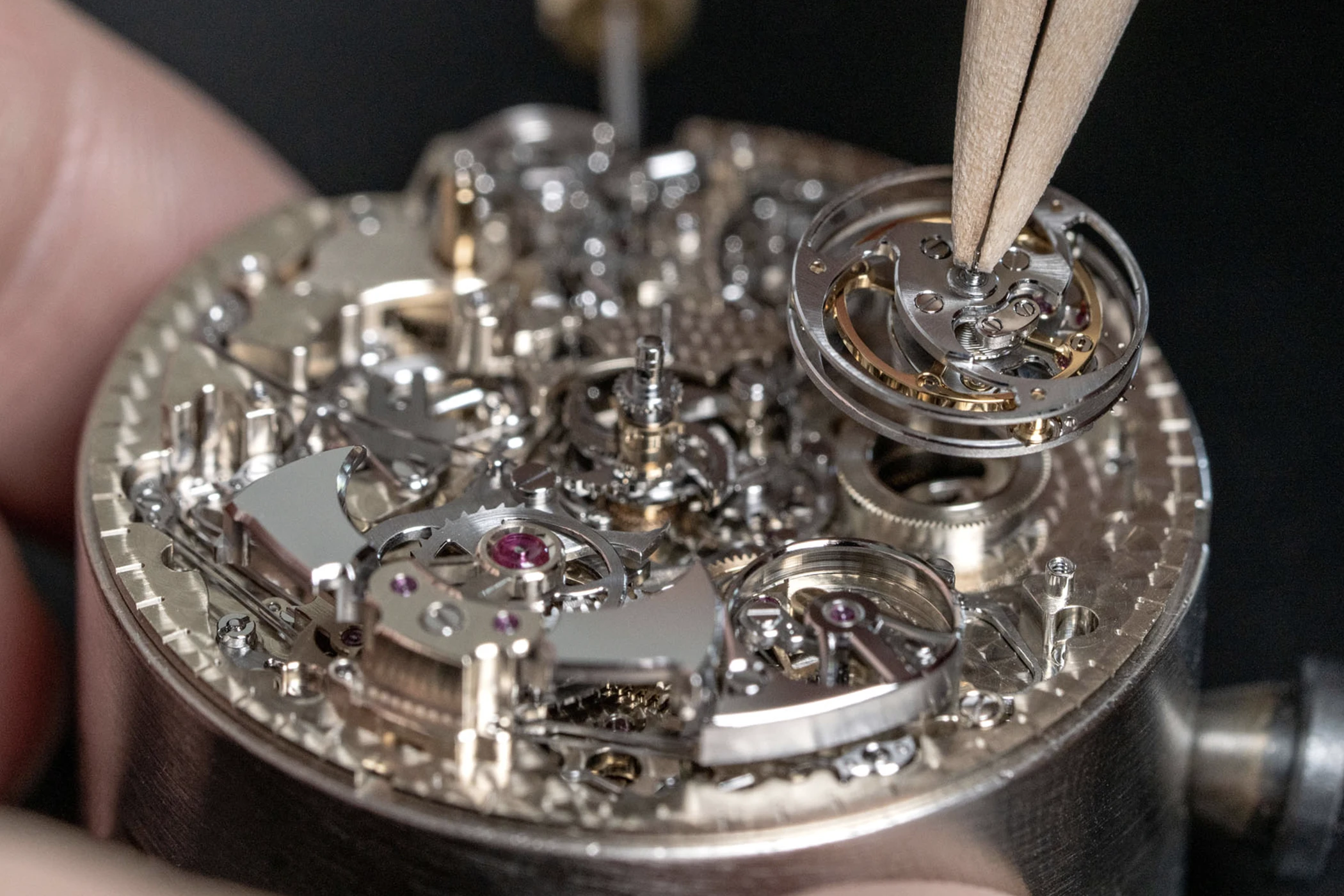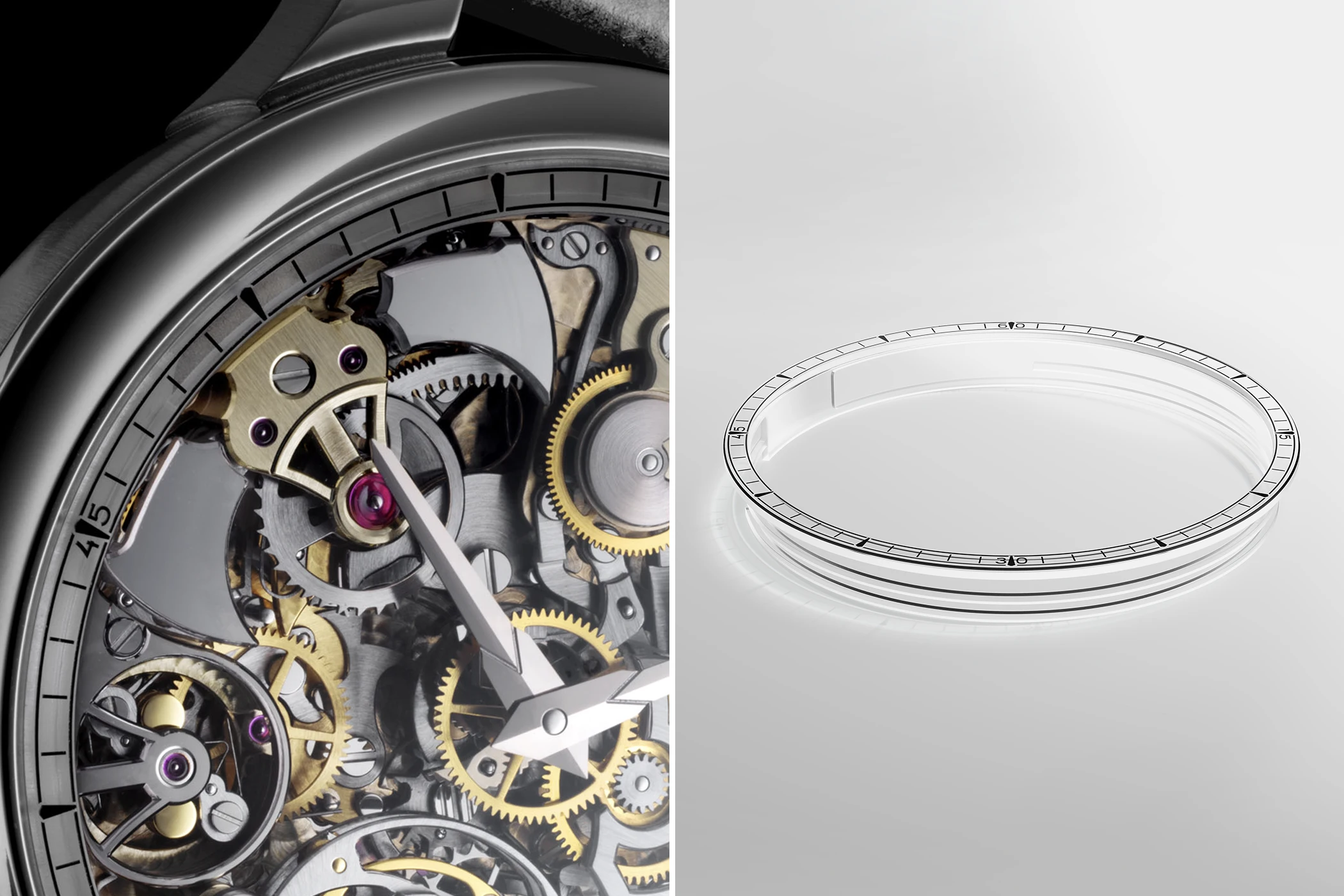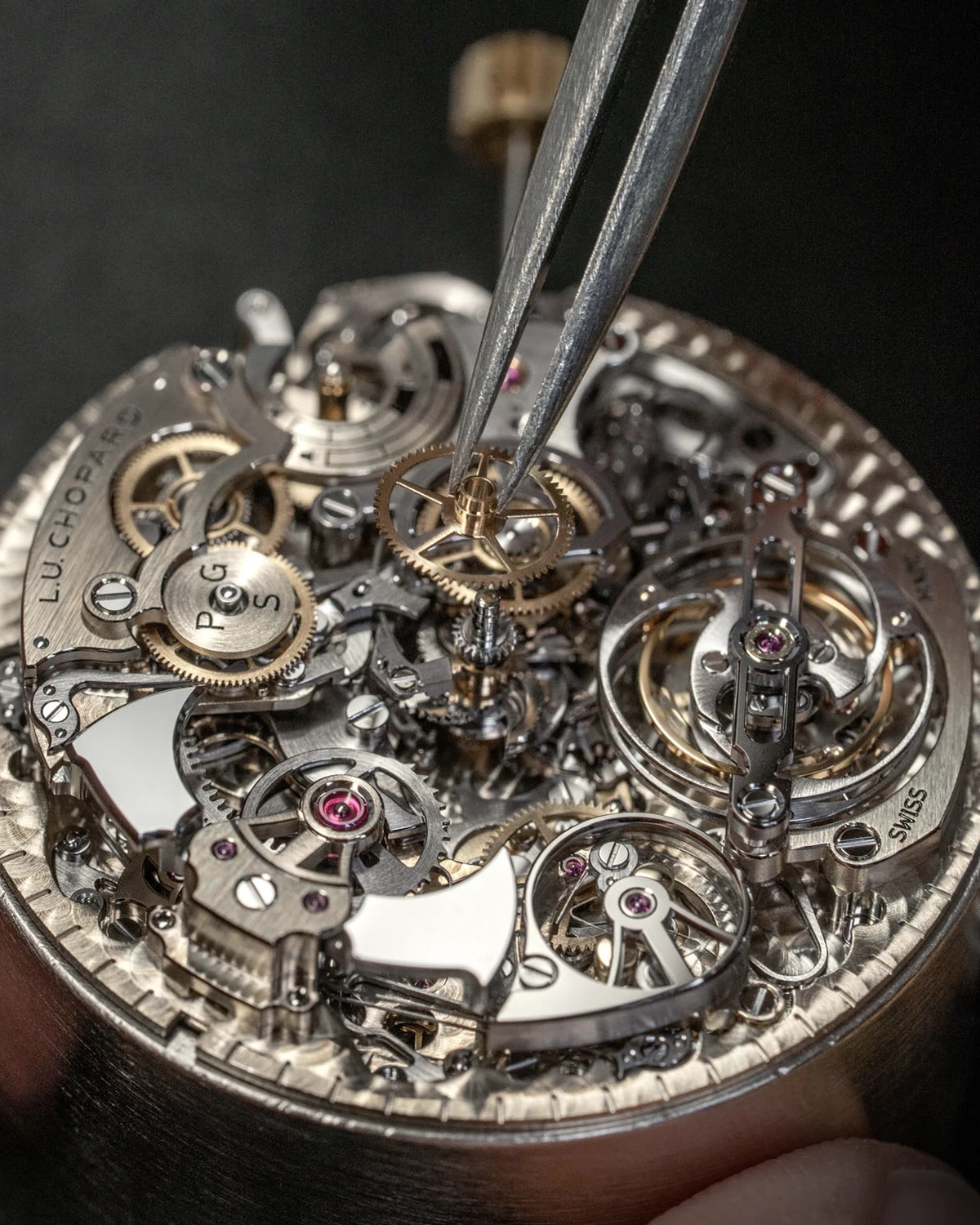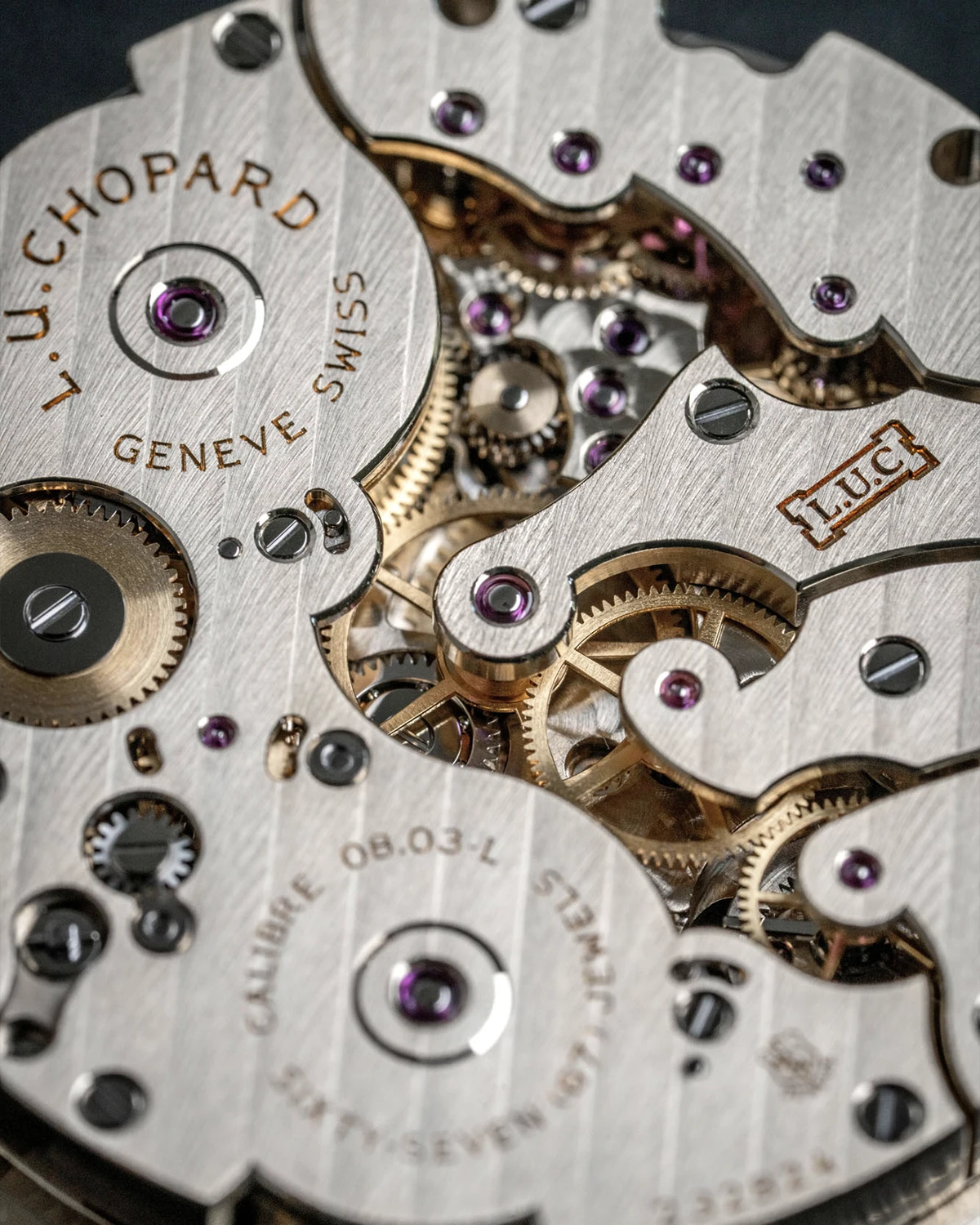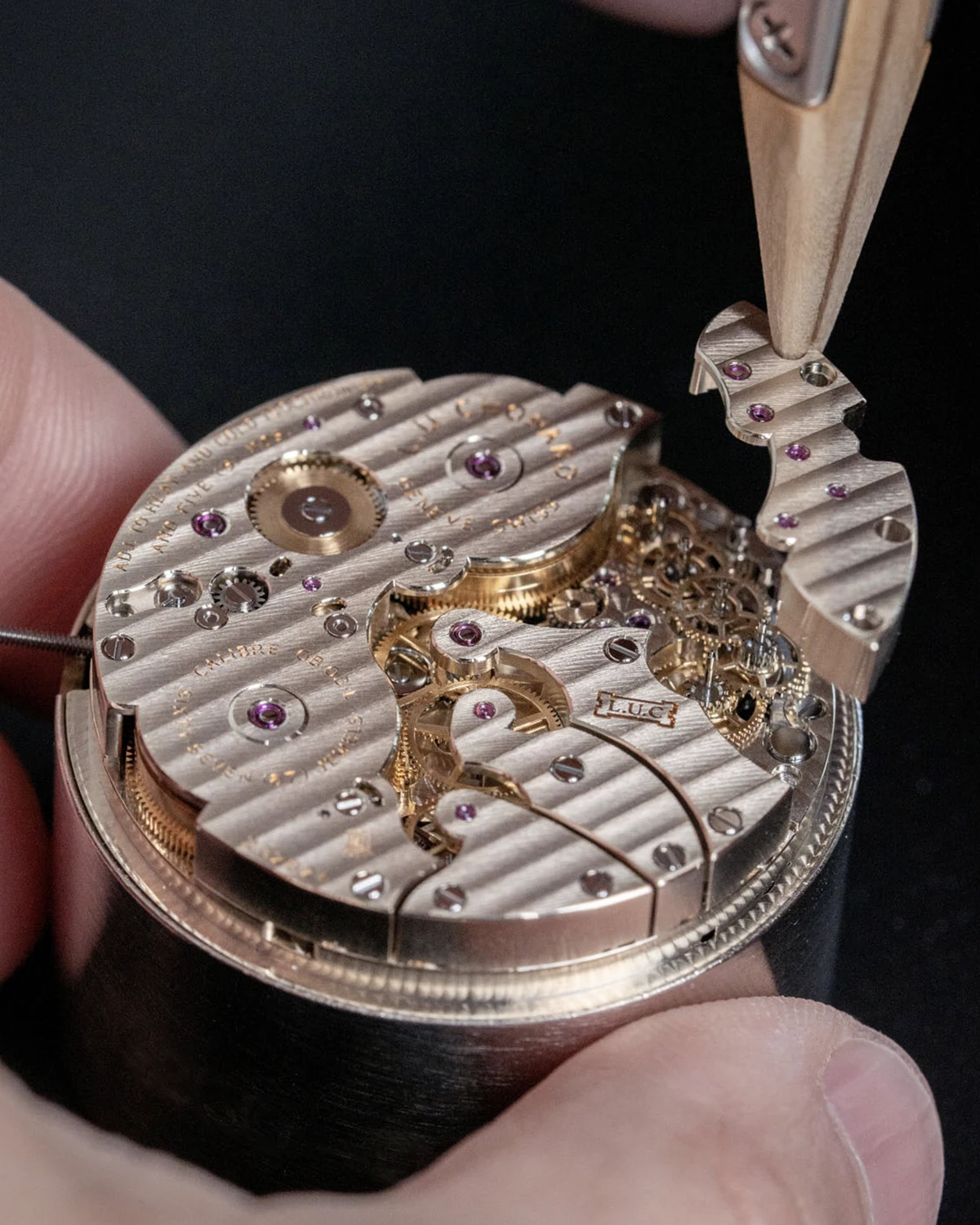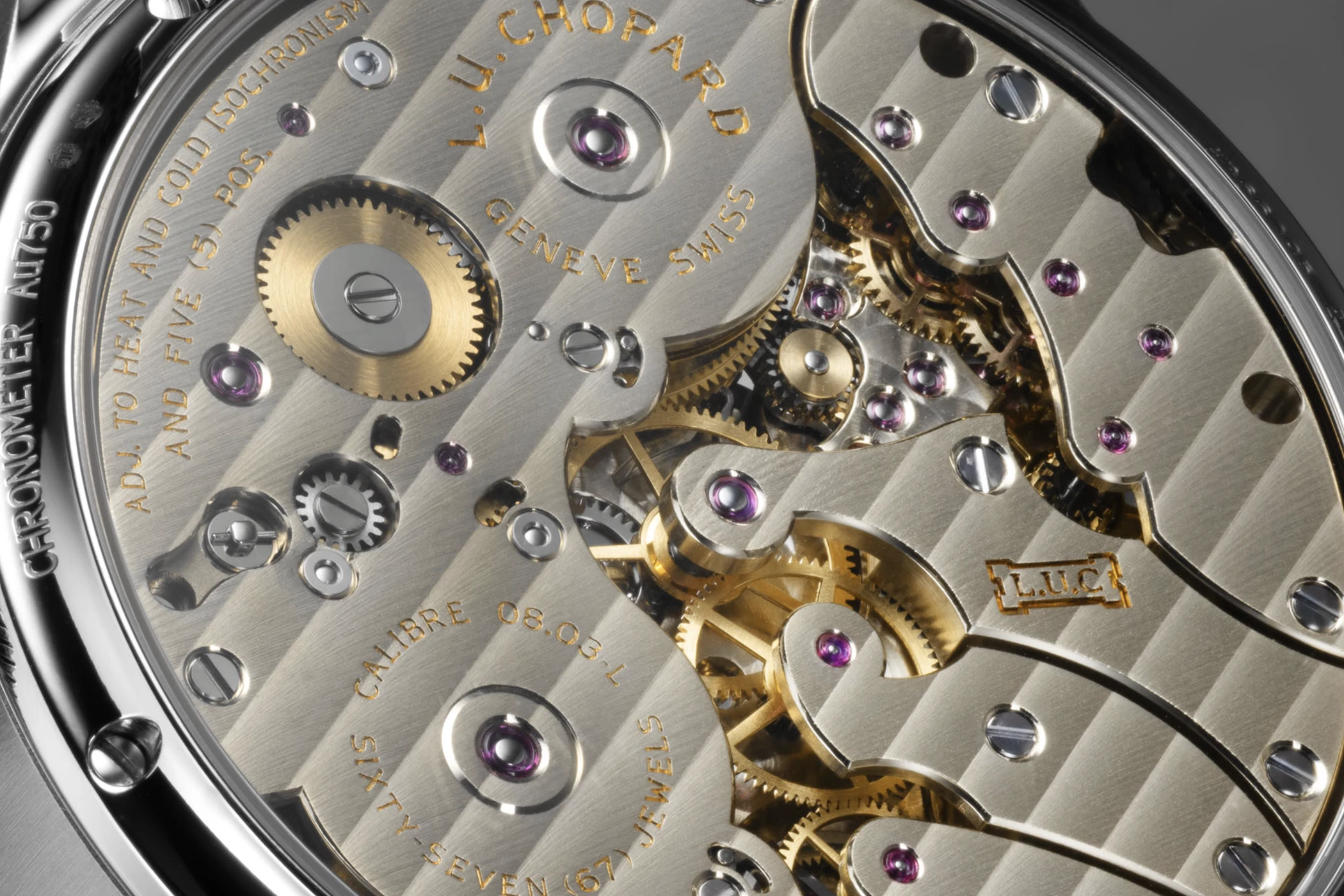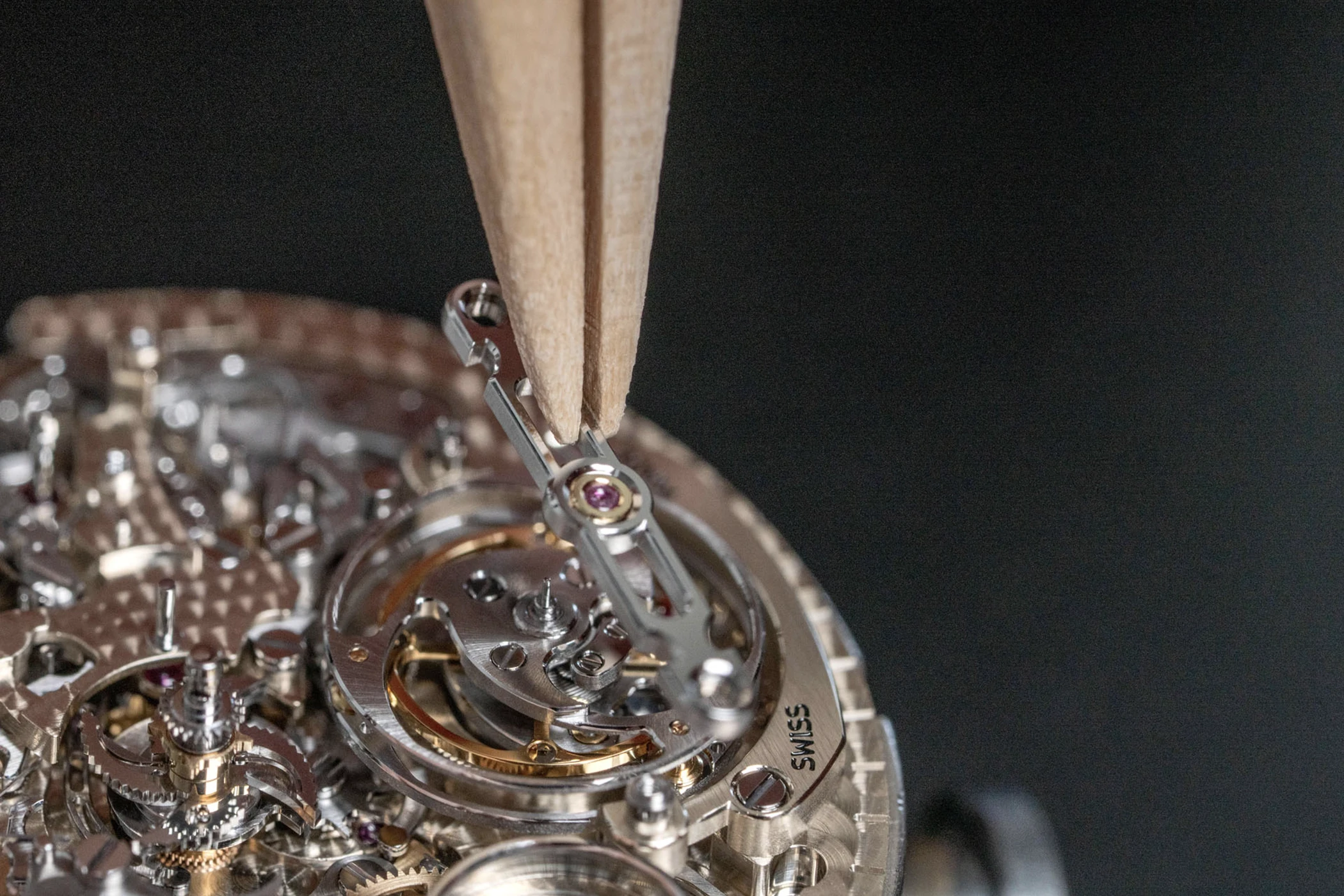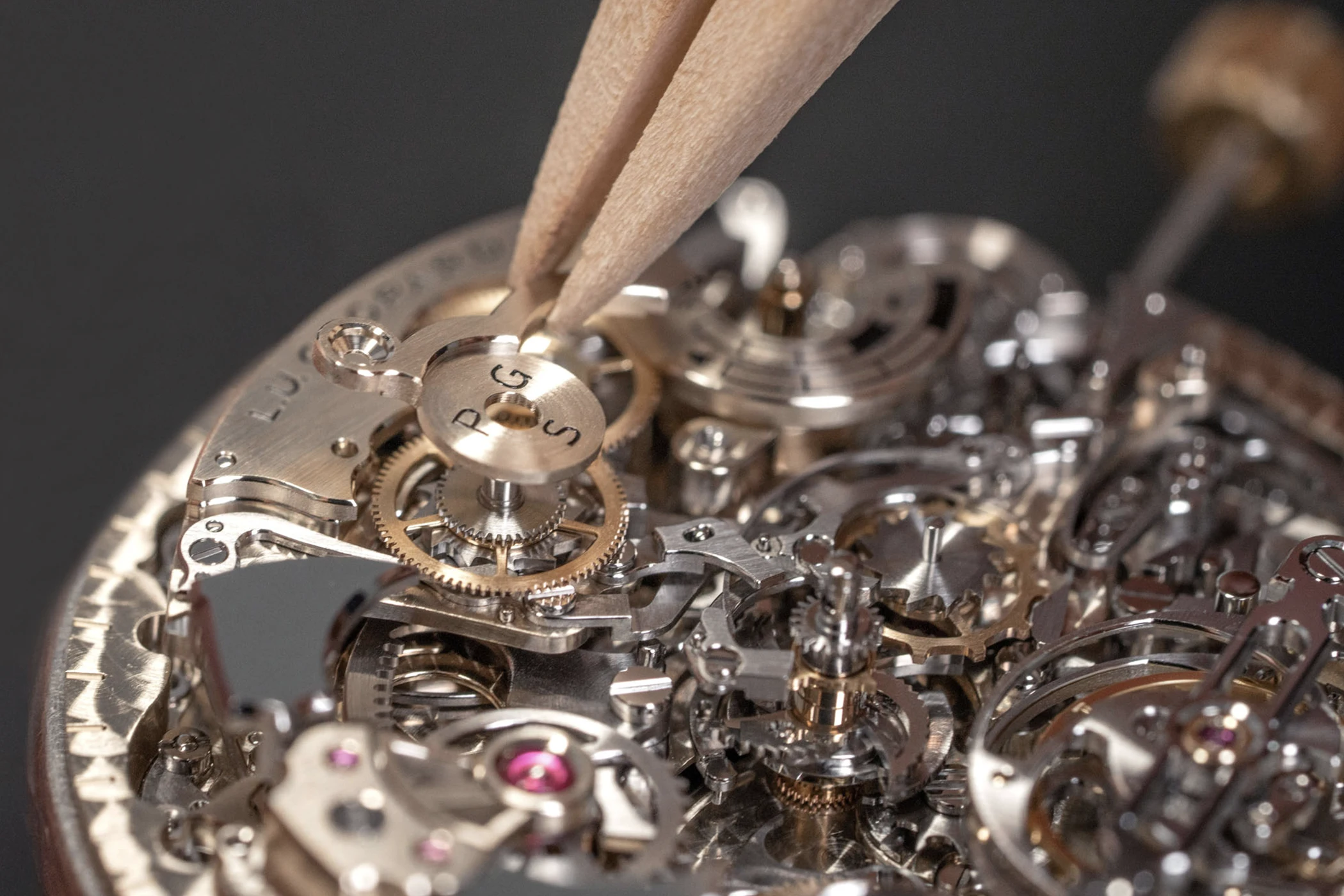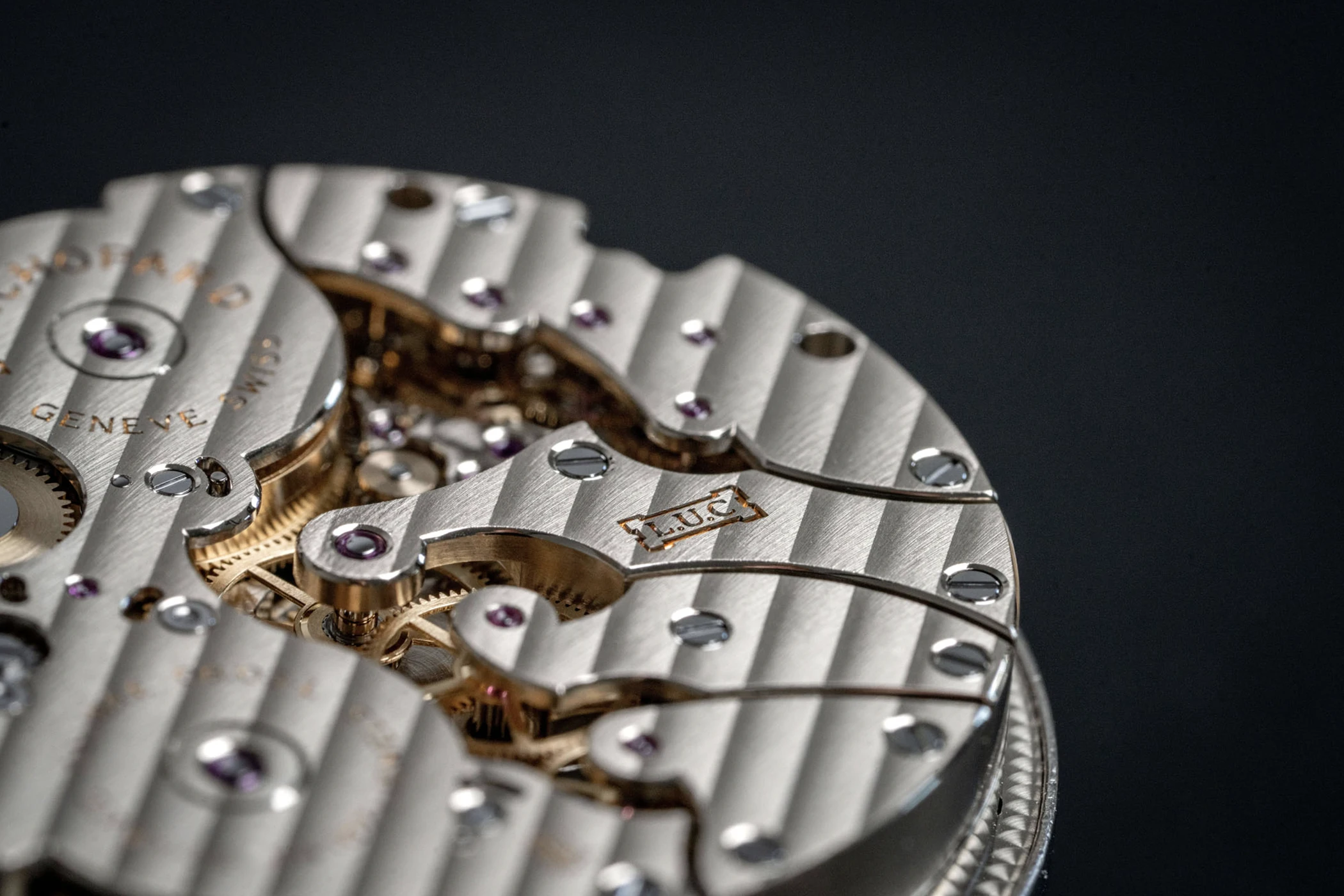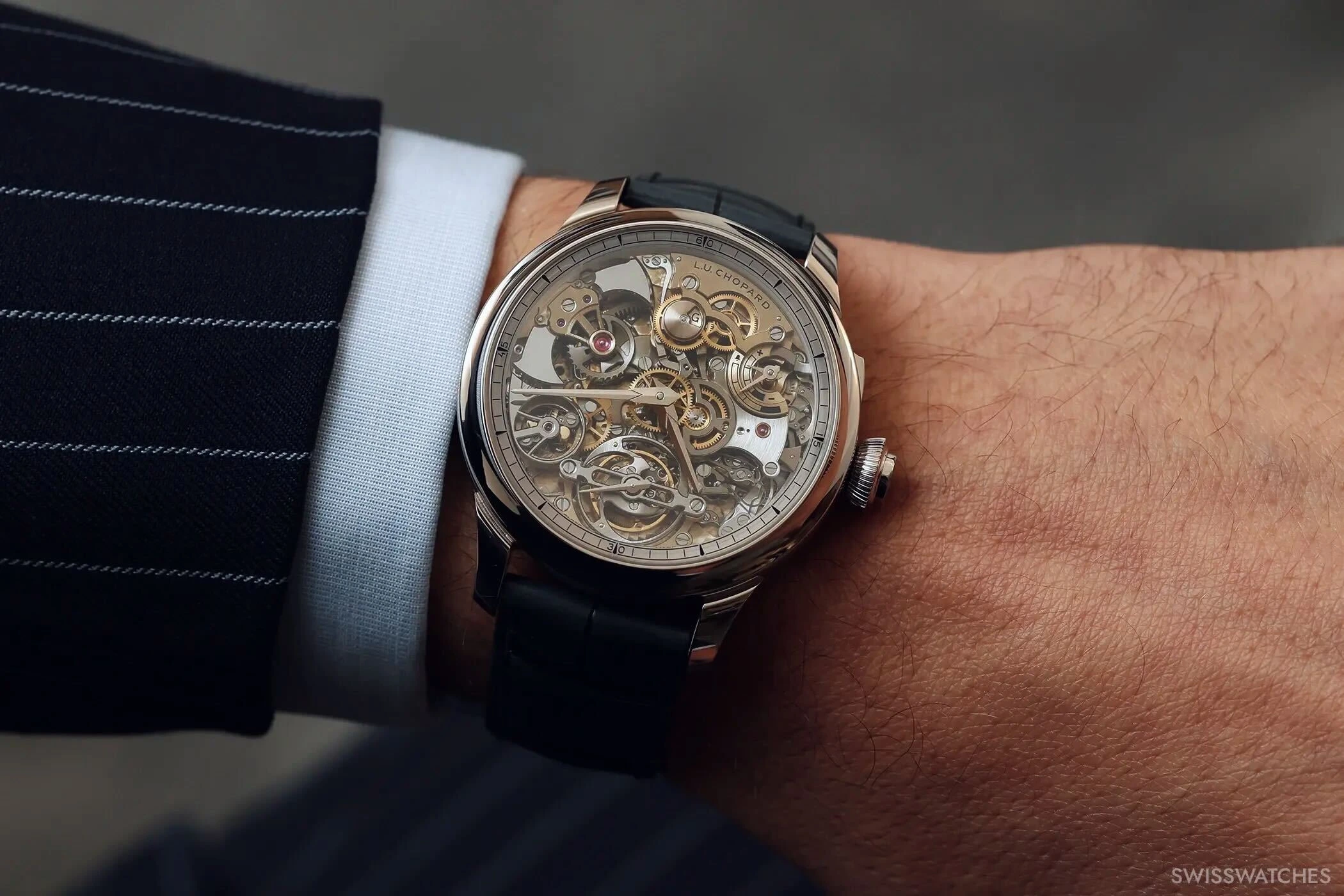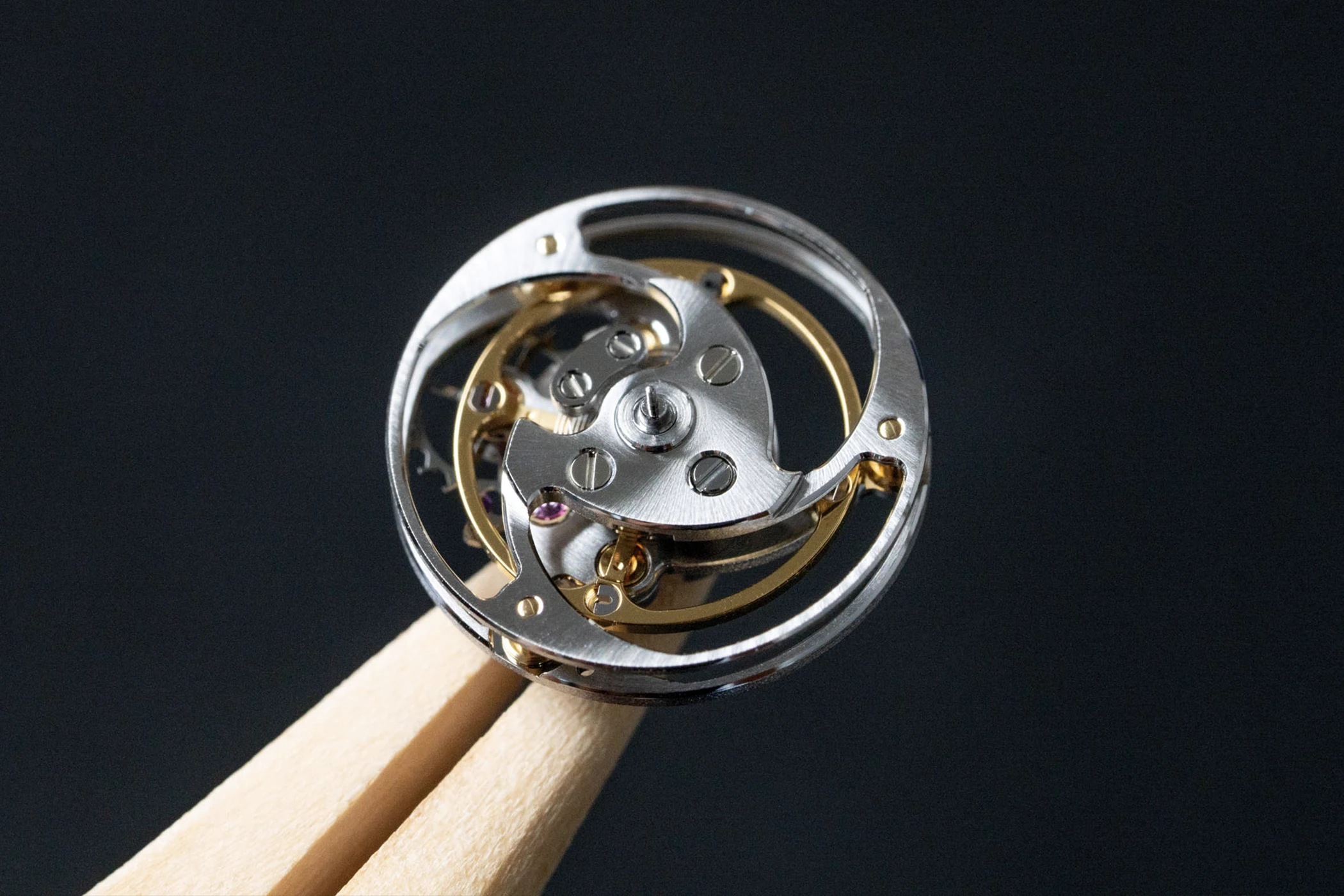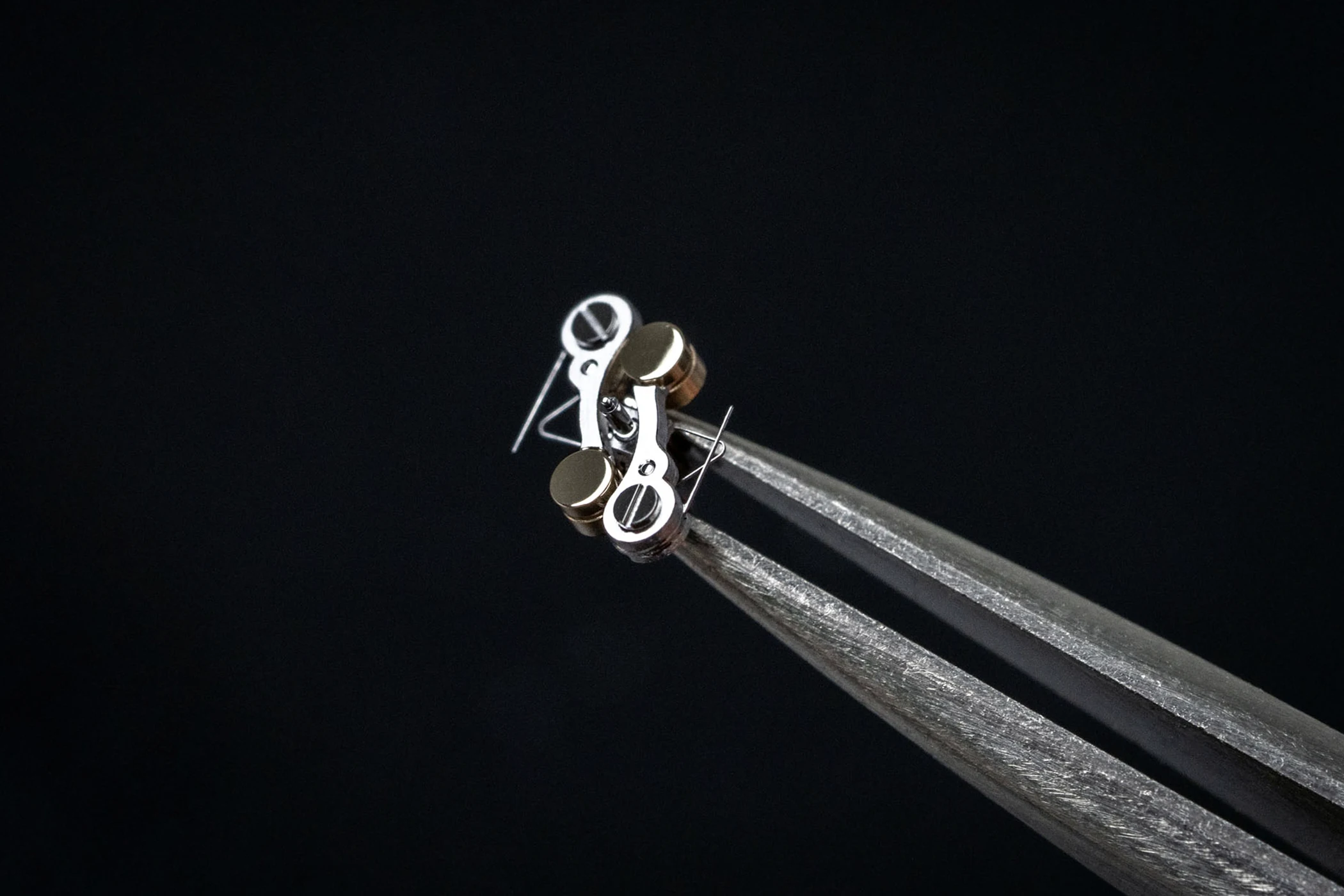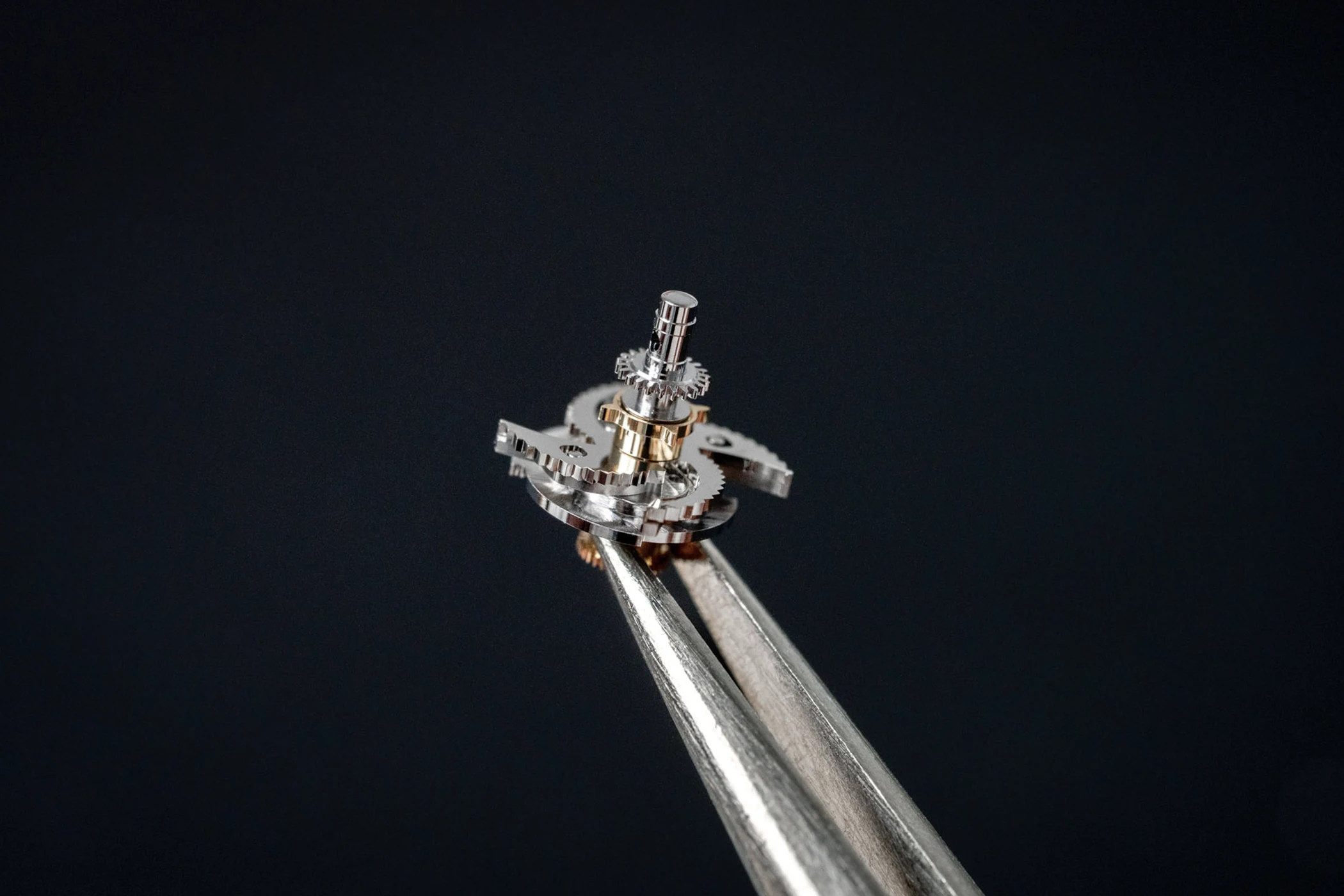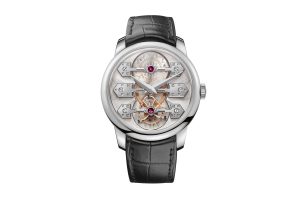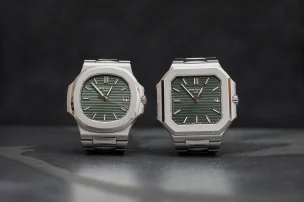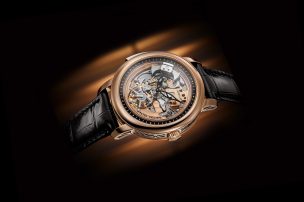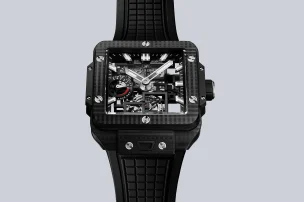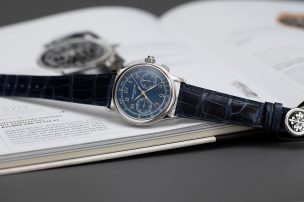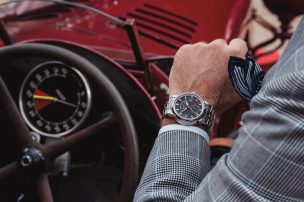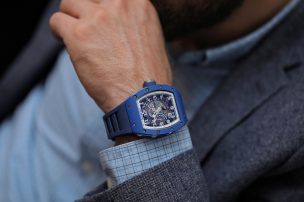

The Sound of Eternity: Chopard Is Introducing Its First Grande Sonnerie – The L.U.C Grand Strike
With the L.U.C Grand Strike, Chopard arrives at a technical milestone it has been working towards for decades: a wristwatch that unites a grande sonnerie, a petite sonnerie, and a minute repeater – and whose sound is not produced by traditional steel gongs but by an in-house technology using sapphire-crystal gongs. ‘When you listen to the chimes, you hear the heartbeat of haute horlogerie within the Chopard Manufacture. If this sound moves you, then you understand our approach to making watches,’ says the man behind the achievement, Co-President Karl-Friedrich Scheufele.
The Long Path to the Summit
Chopard’s journey towards a grand sonnerie began early in the new millennium. In 2006, the manufacture presented the L.U.C Strike One; an internal development of an in-house grand sonnerie calibre began as early as 2007. The milestones that followed strengthened the brand’s technical expertise and demonstrated a willingness to innovate: the L.U.C All-in-One (2010), the high-frequency construction of the L.U.C 8HF (2012), and – as a decisive step in acoustics – the L.U.C Full Strike (2016), which for the first time sounded the hours, quarters, and minutes on gongs made of sapphire crystal. In 2017, it received the Aiguille d’Or at the Grand Prix d’Horlogerie de Genève, the event’s highest distinction.
Scheufele places the latest development in context: ‘We are effectively working in a 10-year rhythm – with the first Strike One in 2006, the Full Strike in 2016, and now our very first watch that will be unveiled in Dubai in 2025 but will only be delivered to its first customer in 2026.’
Grande Sonnerie – A Pinnacle in the History of Watchmaking
Striking watches with automatic hour chimes have been around since the early 19th century, appearing in both table clocks and pocket watches. Patek Philippe records its first pocket-watch movement featuring both petite and grande sonnerie in its company journals from 1845; the watch itself, housed in silver, dates to 1846. The first wristwatch with a grande sonnerie did not appear until 1992, when independent watchmaker Philippe Dufour unveiled his creation – a milestone arriving almost 150 years later, nd one that effectively set in motion the modern pursuit of this most prestigious complication. Since then, only a handful of leading manufactures have succeeded in producing such a mechanism. In 2014, to mark its 175th anniversary, Patek Philippe presented its first grande sonnerie wristwatch, followed by the reference 6301P in 2020. Subsequent individual pieces or very limited series were created by Jaeger-LeCoultre, Vacheron Constantin, Greubel Forsey, and, in 2024, by Bulgari – and of course, alongside Audemars Piguet earlier in the year, also by Vacheron Constantin with what remains, to date, the most complex wristwatch ever made, previously reported on by us.
In total, only around 120 to 150 grande sonnerie wristwatches are believed to have been produced to date. This number illustrates both the rarity and the complexity of the construction. Prices for such pieces typically exceed one million euros. Karl-Friedrich Scheufele keeps to the tradition of discretion, noting that “what matters is attracting the right clients with the corresponding passion.” He also downplays any notion of competition to be first: “We follow our own timing. Now was the right moment to present the watch. Whether we are the first or not is irrelevant.”
Architecture and Finishing: L.U.C Grand Strike Mechanics Experienced Up Close
The L.U.C Grand Strike is the most complex watch ever developed at the Chopard Manufacture, which Karl-Friedrich Scheufele has been steadily shaping into a leading high-end facility since 1996. The calibre L.U.C 08.03-L comprises 686 components, housed in a 43.00 mm white-gold case – naturally made from ethically sourced gold, as is now standard for all of the maison’s precious-metal pieces. Measuring 43 mm in diameter and 14.08 mm in height, the construction is remarkably compact given the combination of a sonnerie mechanism, tourbillon and time display. At present, the Code 11.59 Grande Sonnerie by Audemars Piguet is smaller and flatter, but it dispenses entirely with a tourbillon.
In this instance, the usually understated Chopard Co-President deliberately chose to forgo a traditional dial. Scheufele summarises the aesthetic decision, ‘We intentionally decided against a dial because there is so much of interest to be seen that we preferred to let the movement speak for itself.’
The open design reveals both hammers at 10 o’clock, the minute tourbillon with small seconds at 6 o’clock, and the twin power-reserve indicators for the timekeeping and striking mechanisms at 2 o’clock. The plates and bridges are made of German silver (maillechort), a sensitive material that increases the difficulty of assembly but develops a natural patina over time, much like many historical pocket watches.
Patented Acoustics: Sapphire Instead of Steel
Chopard’s distinctive monobloc sapphire system – in which the watch glass and the gongs are both cut from a single block of sapphire – has been a defining feature since the Full Strike and has earned the manufacture a dedicated following. The small metal hammers strike the sapphire gongs, producing a full, clear and pleasantly resonant sound that is carried directly forward through the crystal. As a result, the watch does not require an acoustic amplifying caseback or any other technical additions to prevent the sound from being absorbed by the wrist, or by the surroundings in a restaurant or elsewhere – wherever the few owners of such a watch may wish to hear it.
The L.U.C Grand Strike develops this sapphire-based acoustic approach further and relies on ten in-house patents, five of which are new and specific to this model. The sapphire gongs retain their square cross-section, which optimises the transfer of energy between hammer and gong. Energy losses are minimised and the sound is projected directly forward through the crystal. Scheufele notes, ‘It produces a clear, powerful, and multi-layered tone.’ The C–F chord used for the chimes is perceived by the human ear as particularly harmonious.
L.U.C Grand Strike Mechanism Insights
The striking mechanism operates with notable speed: whether activated manually as a minute repeater or automatically via the grande/petite sonnerie, 34 components are brought into position within 0.3 seconds. Twenty-two manually adjusted springs govern the precise sequence of actions before the hammers strike the sapphire gongs. Additional patented features prevent incorrect operation and block activation when the remaining power reserve is too low. Thus, they improve the energy efficiency of the striking mechanism.
Best in Class: Geneva Seal and COSC
Anyone familiar with Karl-Friedrich Scheufele will also be familiar with his principle: trust is good, but verification is better. The Grand Strike is the only grande sonnerie in the world to bear both the Geneva Seal (Poinçon de Genève) and COSC chronometer certification – the latter conducted in petite sonnerie mode: the petite sonnerie consumes more energy than the grande sonnerie because the mechanism suppressing the hour strike at each quarter acts as a form of ‘brake’ on the striking system. Scheufele wanted clarity, ‘We could have switched off the sonnerie and certified only the movement, but no – our team decided to do it this way.’ He smiles with unmistakable satisfaction. His view on external scrutiny is straightforward: ‘For me, external control – whether certification or an additional guarantee – is always the better option. Inside the company, one could too easily fool oneself.’
Performance and Everyday Usability
Technically, Chopard leaves little room for doubt. The hand-wound calibre L.U.C 08.03-L operates at 4 Hz (28,800 vph), an unusually high frequency for a grande sonnerie. Furthermore, it offers a power reserve of around 70 hours for the timekeeping gear train. For comparison, Patek Philippe’s Grandmaster Chime runs at 25,200 vibrations per hour (3.5 Hz), while Audemars Piguet’s calibre 2956 in the Code 11.59 Grande Sonnerie Carillon Supersonnerie operates at 21,600 vibrations per hour (3 Hz) with a 48-hour power reserve.
In Chopard’s construction, a separate barrel drives the striking mechanism, allowing at least 12 hours of uninterrupted grande sonnerie function. A stop-seconds mechanism enables precise synchronisation when setting the time. The sole existing prototype underwent extensive testing: during validation, Chopard simulated five years of wear within three months – 62,400 grande/petite sonnerie activations plus 3,000 manual repetitions. In that period, the sapphire gongs were struck more than half a million times. For dedicated collectors, that is reassuring information indeed.
How Many Will Be Made? An Unlimited Run
The very first L.U.C Grand Strike has now been completed and was presented at Dubai Watch Week. Scheufele is confident about the number of prospective clients, especially after the strong reception of its predecessor, the L.U.C Full Strike: ‘We assume that we can reliably produce two pieces a year, perhaps more.’ His benchmark is drawn from a decade of Full Strike production: ‘Over ten years, we made just over 120 examples of the Full Strike,’ including numerous small series and one-off pieces. ‘The first buyer for the very first Grand Strike is already waiting.’ He had only seen the watch on paper, Scheufele notes, but was determined to secure the first example.
According to Chopard, only around two pieces can be produced per year, and the L.U.C Grand Strike is priced at CHF 780,000 before taxes, reflecting the rarity and complexity of a grande sonnerie with sapphire-crystal gongs.
A Watch That Must Be Experienced
The new case architecture, crafted from 18-carat ethical white gold with a vertically satin-brushed midsection, polished bezel, and a concave bassiné profile towards the caseback, enhances both wearing comfort and the way the watch catches the light. Scheufele explains: ‘The redesigned case was constructed around the movement. Our primary aim was to make the L.U.C Grand Strike a watch that is genuinely enjoyable to wear.’ The watch is delivered with easily interchangeable alligator straps in grey and dark blue, fitted with a white-gold folding clasp.
Facing Forward
Developing a grande sonnerie across periods of crisis and industry upheaval requires, as Scheufele often emphasises, considerable stamina, ‘It is like an expedition. As with any movement development, there are always setbacks, but I gave my developers the time they needed. And if you cannot reach the summit on one attempt, you should not force it at all costs – you find another route.’ What remains essential for him is securing the commitment of everyone involved in the project.
Asked whether such a venture can be commercially sustainable, he points pragmatically to the existing Full Strike experience and the realities of craftsmanship, ‘Of course we ran the numbers, but the timeframes are entirely different.’ Can one still speak of a return on investment after twenty years? Or is this more akin to a personal lifetime achievement? Ultimately, the ‘one watchmaker, one watch’ principle inevitably comes at a cost when 686 components are involved. It also requires the rare specialists that Chopard has spent years training and nurturing. Scheufele notes, ‘Of all the watchmakers we train, perhaps only one in three or four years is suited to a task like this. But what are a few years when set against a piece of eternity on the wrist?’
A Turning Point in the Watchmaking History of L.U.C Chopard
The L.U.C Grand Strike is not so much a single watch, or even a series, as it is a defining moment in Chopard’s history. Scheufele remains characteristically modest: ‘If anyone still had doubts about our capabilities, we hope this will dispel them.’ The L.U.C Grand Strike represents the distilled result of 30 years of work at the Chopard Manufacture, which he established in 1996. It is both a legacy and an obligation for the next generation of the Scheufele family, who are already active within the company.
Allow me a personal note in closing. When the L.U.C Full Strike was presented nine years ago, I wrote something out of genuine enthusiasm that some of my colleagues dismissed at the time: that, as the only family-owned Swiss manufacturer, Chopard had the potential to become the Patek Philippe of the 21st century. Whether that statement ultimately proves true is for Karl-Friedrich Scheufele’s children to determine. Yet collectors could hardly wish for a firmer foundation; this masterpiece makes the case. As long as the Scheufele family remains faithful to its philosophy, continuing to balance innovation with tradition so effectively, I will stand by that statement.
Technical Specifications
● Calibre: L.U.C 08.03-L, hand-wound; 686 components; 67 jewels; 4 Hz; 70-hour power reserve for the timekeeping gear train; separate barrel for the striking mechanism (≥ 12 hours in grande sonnerie mode); stop-seconds function.
● Functions: Grande sonnerie / petite sonnerie / minute repeater; tourbillon with small seconds; sonnerie mode display; twin power-reserve indicators.
● Case: 43.00 mm × 14.08 mm; 18-carat ethical white gold; pusher integrated into the crown; slide selector for sonnerie modes.
● Certifications: Poinçon de Genève; COSC (tested in petite sonnerie mode).
● Acoustics: Monobloc sapphire gongs (orthogonal cross-section); C♯–F natural chord (‘Sound of Eternity’).
